After today’s installment, Iowa wildflower Wednesday is signing off for the winter and will return sometime in March or April. All previous posts in the series are archived here. I often hear positive feedback about the wildflower diaries. To my surprise, one that struck a chord with lots of readers this year featured Poison hemlock and Wild parsnip, a pair of potentially harmful invasive plants.
Guest authors are welcome to contribute posts anytime at Bleeding Heartland. Please get in touch if you would like to be part of Iowa wildflower Wednesday during 2016. I’d be particularly grateful if some talented photographer could capture usable shots of “plants that got away” from me: Cardinal flower (Red Lobelia), Four O’Clock, Purple poppy mallow, or Common rose mallow. I never get any depth or definition on flowers with red or deep pink petals.
In keeping with a Bleeding Heartland tradition, I’m closing out this year’s series with asters, some of which are among the latest-blooming fall wildflowers. Click through to see New England asters and Frost asters (I think) from 2012, 2013, and 2014.
According to Elizabeth Hill, the first plants you’ll see after the jump are Heath aster (Symphyotrichum ericoides). I took those pictures in early October at the Grinnell College Conard Environmental Research Area. Elizabeth deserves a lot of credit for Iowa wildflower Wednesday’s existence, because she inspired me to learn more about native plants.
Iowa naturalist and photographer Leland Searles identified the next plant featured today as a subspecies of Calico Aster called Symphiotrichum lateriflorum ssp. lateriflorum. They are growing near the bank of North Walnut Creek in Windsor Heights.
I have trouble distinguishing aster species with white ray flowers and yellow disk flowers, so a few mystery plants are pictured below too. They include some unidentified asters I found today just off the Windsor Heights bike trail, behind the Iowa Department of Natural Resources building on Hickman Road. Last weekend’s snowfall finished off the last few flowering black-eyed Susans and brown-eyed Susans, but even now, a few asters are in full bloom.
For a detailed description of Heath aster, its favored habitats, and animals that feed on the species, check out the Illinois Wildflowers website. Here are a few views of the flowerheads:
After I showed Leland Searles the next picture of an aster growing near North Walnut Creek, he told me it couldn’t be heath aster, “because the leaves and flowers aren’t fine enough, and the branching pattern isn’t correct. […] Calico Aster is possible in fairly open areas with moist soil, such as upper wetland margins.” Upon further investigation, he determined it was the Calico aster subspecies Symphiotrichum lateriflorum ssp. lateriflorum, which “used to be [called] Small White Aster, S. vimineus. There has been a lot of revision of the asters by plant taxonomists, and it can be quite confusing.”
According to Searles, telltale signs of Calico aster include: “Plant height 4-5 ft, tendency to arch, branching pattern, presence of very small leaves on the branches, narrow sharp-pointed leaves with few or no teeth, small flower clusters with bracts not spreading, short fine hair on stem, and habitat.”
I took more pictures of the same plant in early November. The light’s not ideal, and the flowerheads have gone to seed, but you can see those leaves and stems.
Unidentified aster, late summer in Windsor Heights:
Unidentified asters blooming in Windsor Heights on November 25:

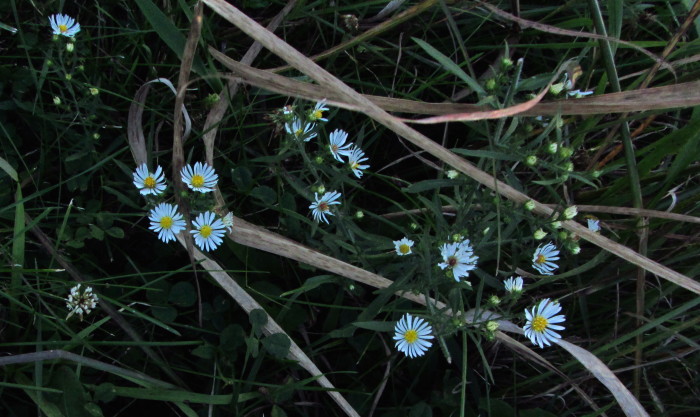
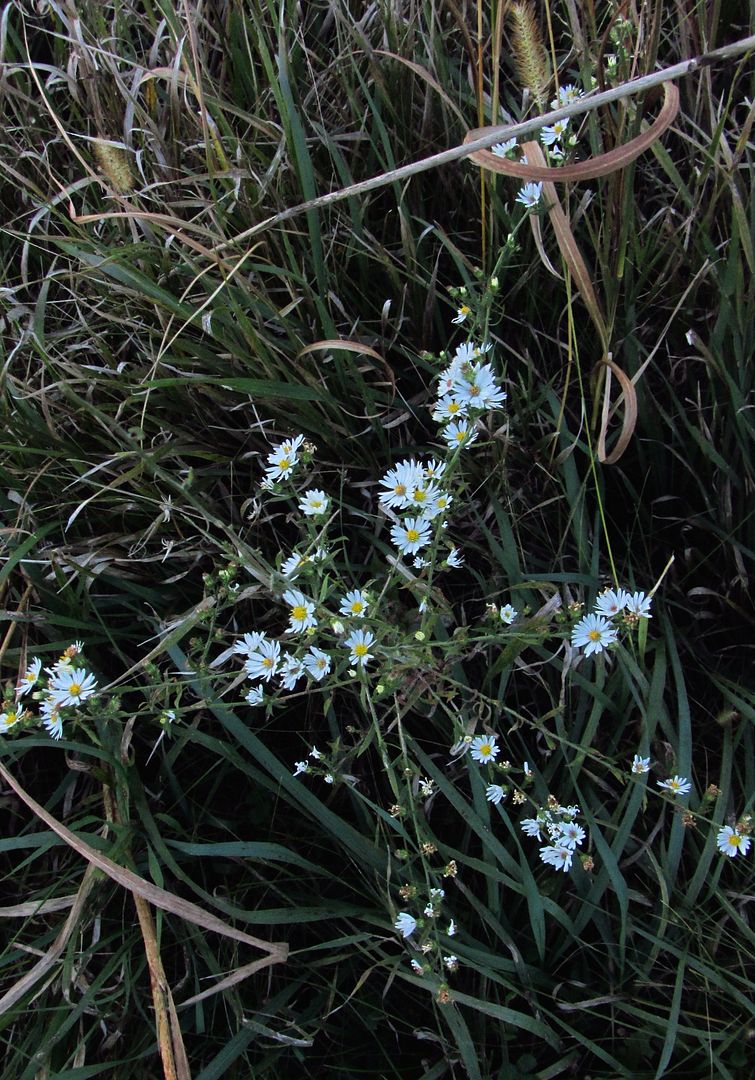

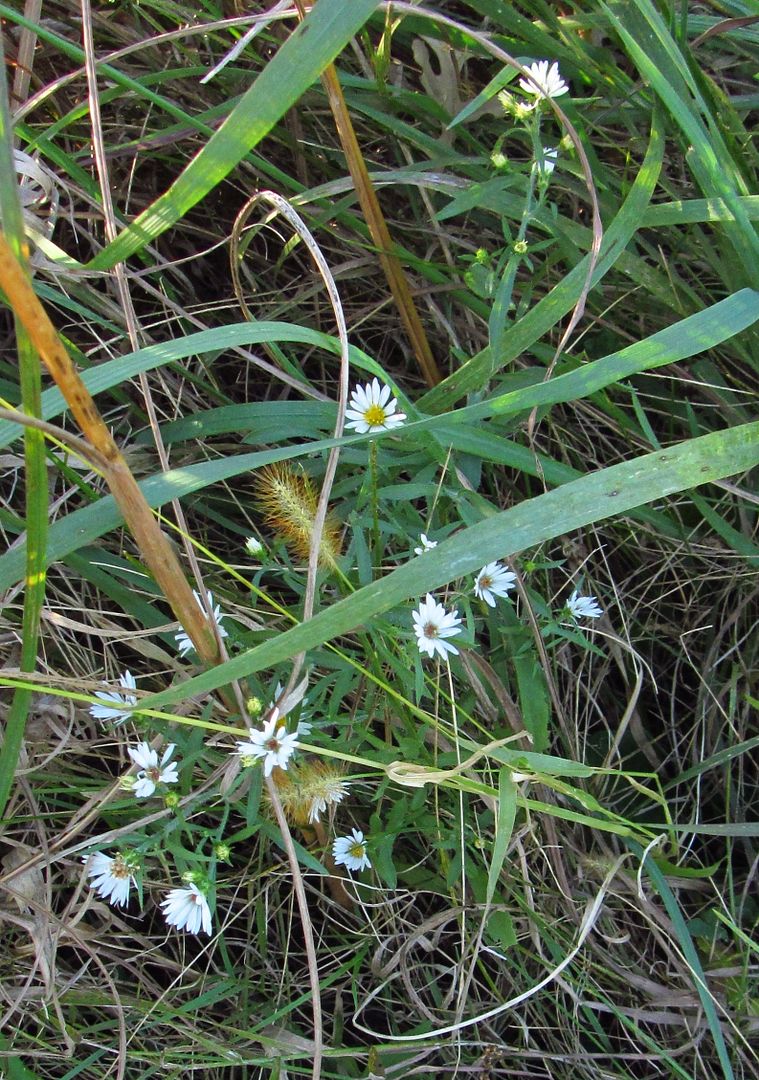

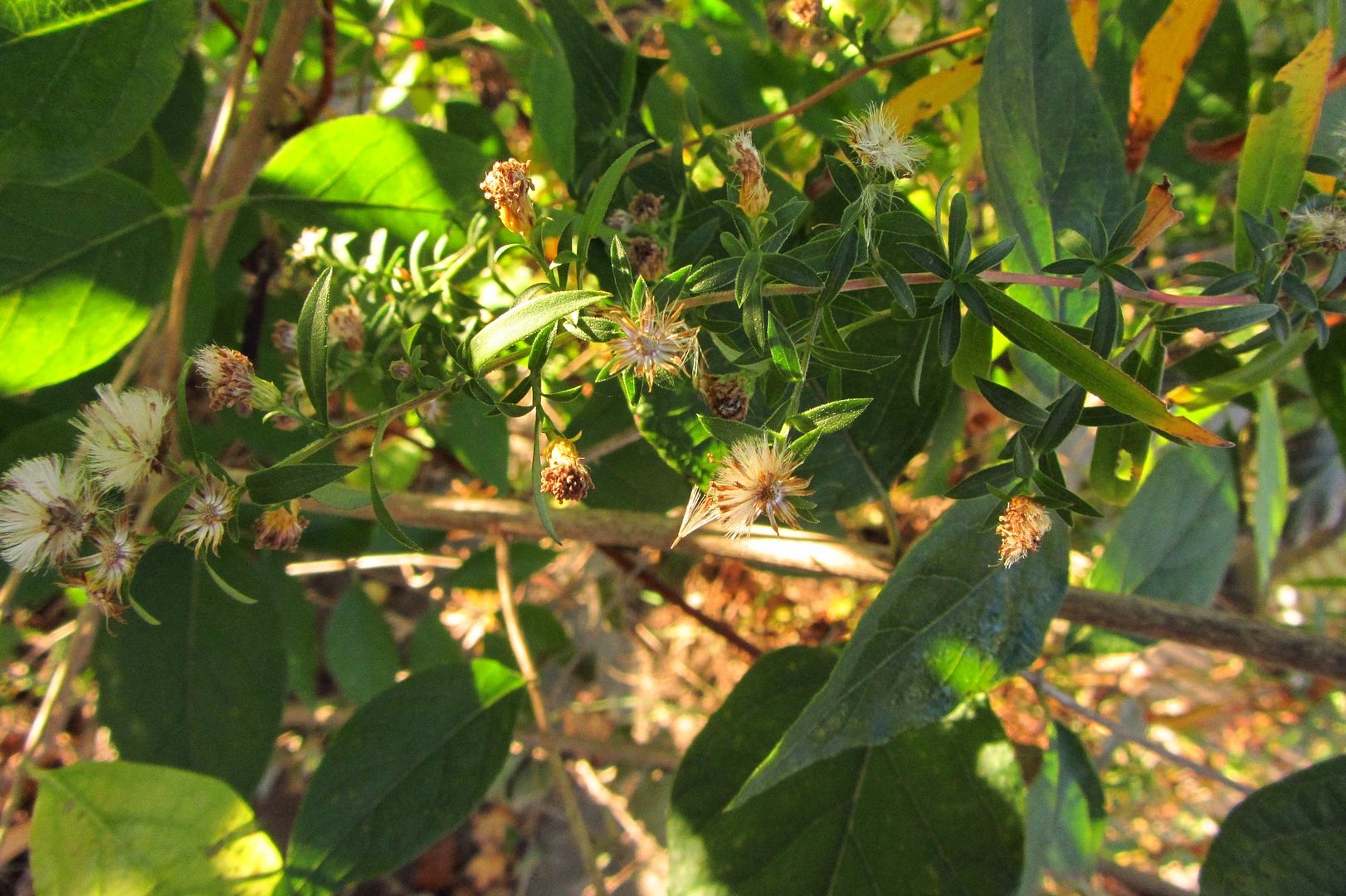
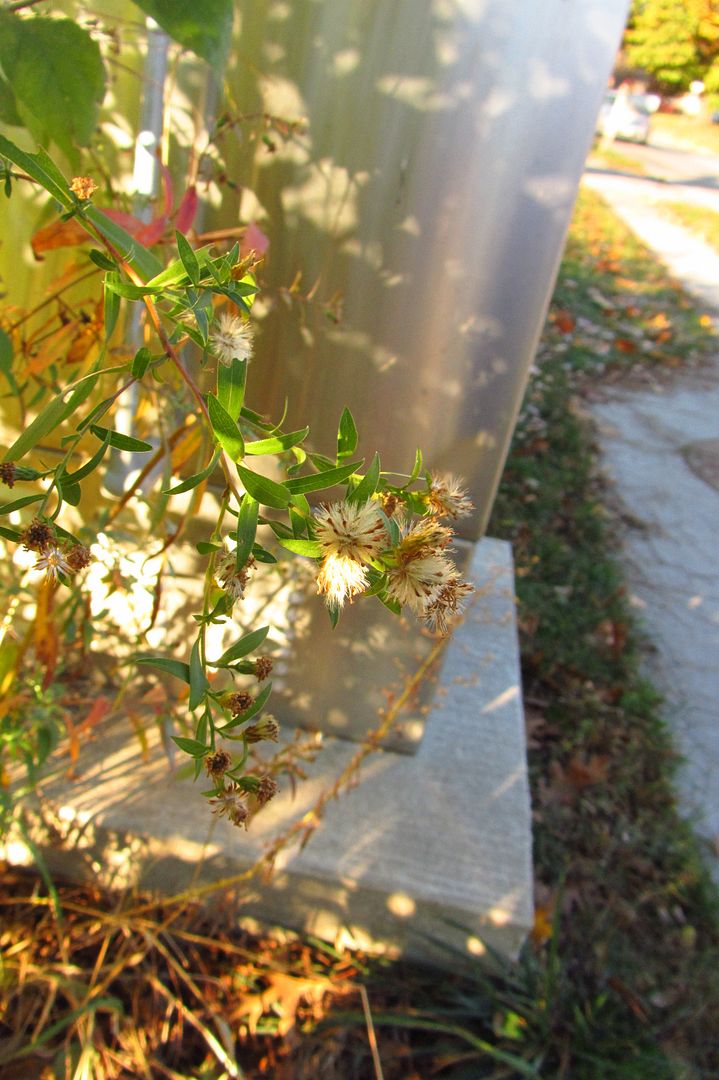
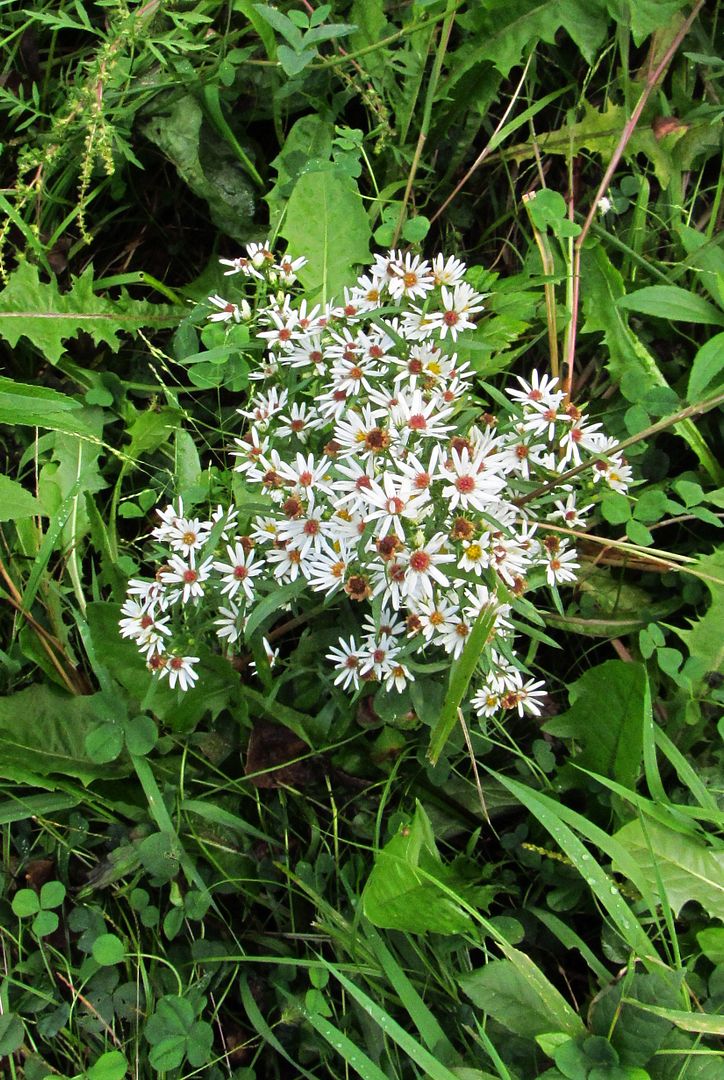
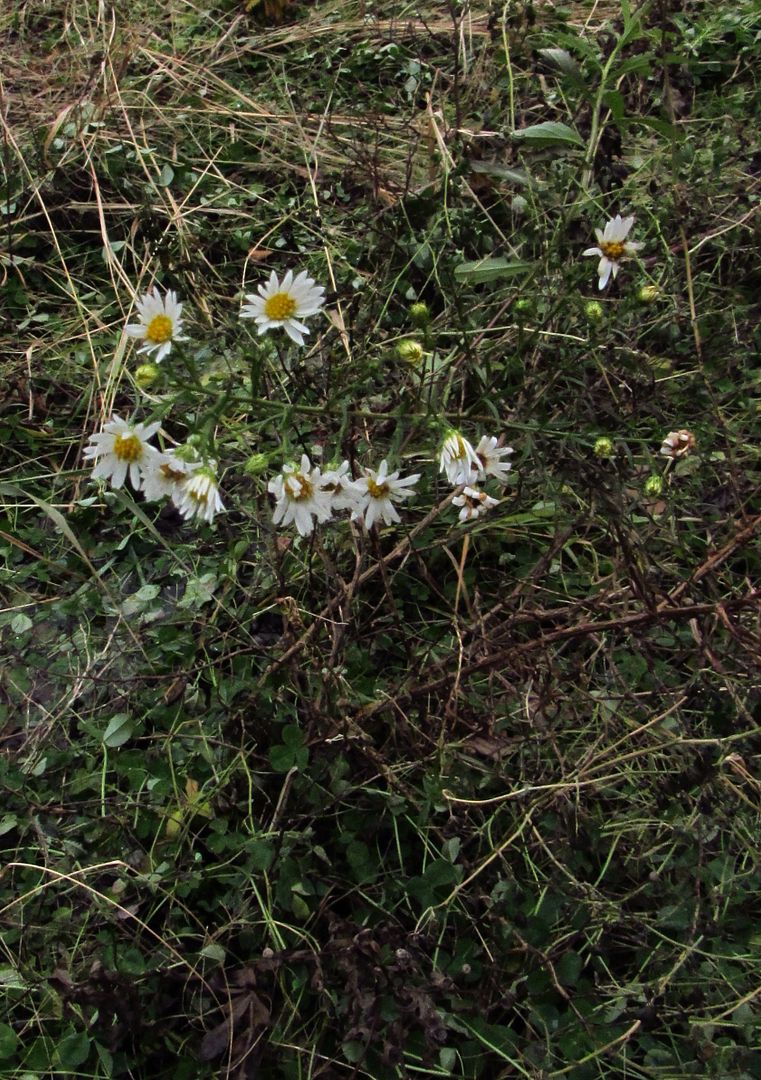
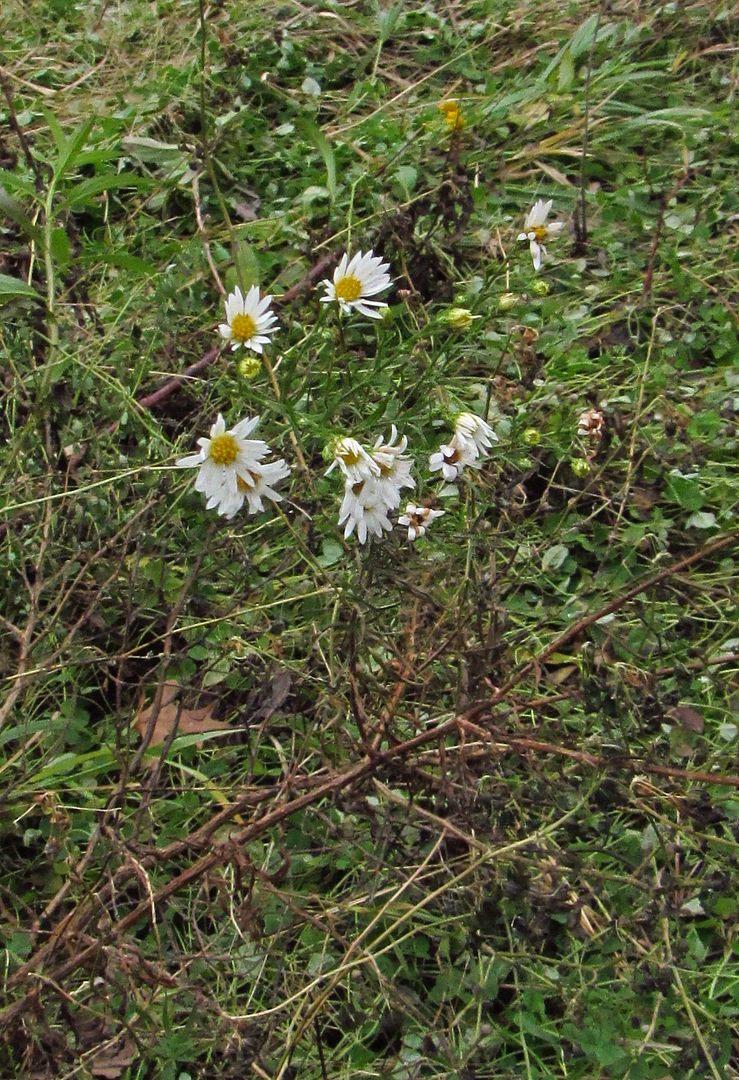

3 Comments
Shooting oversaturated reds
One trick to shooting photos with oversaturated reds is to use the white balance setting to bias the colors toward the center (green) or other end of the spectrum (blues & violets). The photo may need some adjusting later with PhotoShop or similar software, but you’ll have captured the detail in the red areas without the “noise.” Another is to meter the light from the red area by using single-point metering, if your camera has this feature. Again, adjustments to overall lighting, shadows, or highlights can be made later.
/
In the old days, intense reds could be photographed with Fuji film, which had a slight green/blue bias. But the North American standard was Kodak, a “hot” or red/orange/yellow film. These days many digital cameras follow the Kodak color bias. In many SLRs it’s also possible to set up one or more custom color or white-balance settings for just these occasions.
compassplant Wed 25 Nov 10:14 PM
thanks for that advice
I don’t know whether my camera has single-point metering. I have not played around with the white balance setting, other than to change it from sunny to cloudy day or vice versa. Will try that next year.
desmoinesdem Sat 28 Nov 8:40 AM
Asters
I was part of a prairie walk years ago when the leader tried to show us how to use a plant key and it led him to the wrong aster, leading to merriment and the teaching of the phrase SKOA (Some Kind Of Aster). He knew which aster it actually was. but it was interesting to see that even good amateur botanists can occasionally have trouble using keys.
PrairieFan Tue 25 Apr 9:54 AM